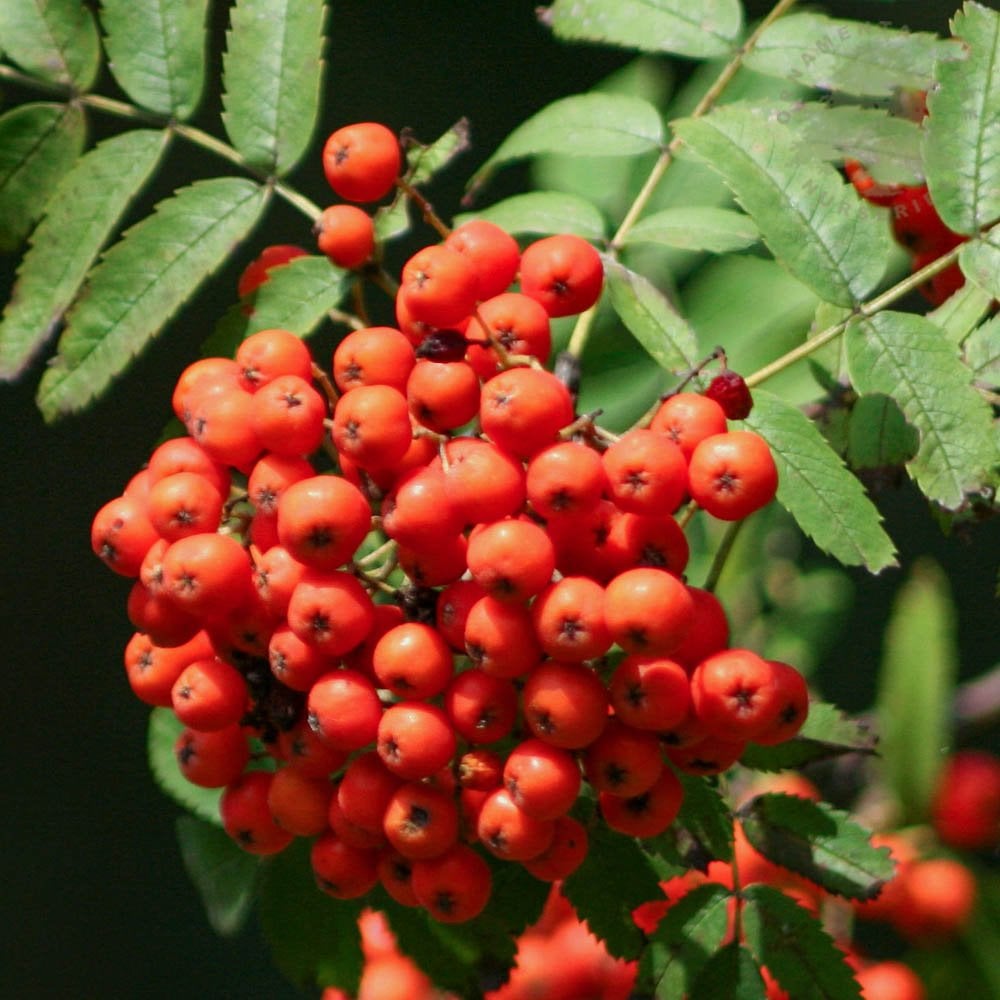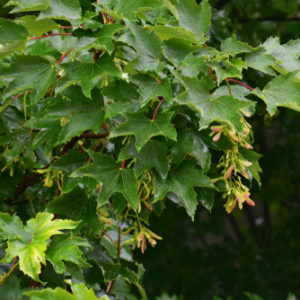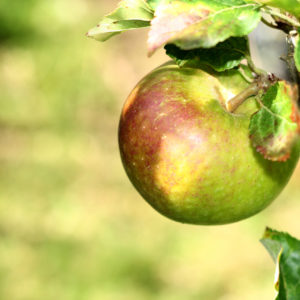Sorbus Sheerwater Seedling
Price range: €180.00 through €520.00
Frequently Bought Together



Description
Quick Facts
- Common Name: Sheerwater Seedling Rowan, Mountain Ash
- Botanical Name: Sorbus aucuparia ‘Sheerwater Seedling’
- Plant Type: Deciduous tree
- Mature Height: 8-12m
- Mature Spread: 4-6m
- Flowering Period: May to June
- Flower Colour: Creamy-white flowers in large flat clusters
- Foliage: Pinnate leaves, fresh green turning orange-red to purple in autumn; abundant orange-red berries
- Hardiness: RHS H7 (very hardy)
- Soil Requirements: Moist, well-drained, acidic to neutral
- Aspect: Full sun to partial shade
- Maintenance: Low
Description
Experience the spectacular beauty of Sorbus aucuparia ‘Sheerwater Seedling’, the outstanding Rowan that brings exceptional seasonal interest, abundant berries, and elegant structure to gardens with its reliable displays and compact form. This outstanding deciduous tree offers remarkable qualities—masses of creamy-white flowers in large flat clusters measuring 10-15cm across in late spring creating frothy displays that attract pollinators, exceptionally abundant large orange-red berries in dense clusters from late summer through autumn providing spectacular colour and vital food for birds, elegant pinnate leaves with 11-15 leaflets creating delicate feathery texture and turning beautiful shades of orange-red to purple in autumn, and compact upright pyramidal form with excellent branching structure making this ideal for small to medium gardens where space is limited, making this one of the finest and most reliable rowans for creating year-round interest, wildlife value, and elegant beauty in gardens.
Throughout spring and summer, this captivating tree displays its characteristic pinnate leaves measuring 15-20cm long composed of 11-15 narrow leaflets with serrated edges in fresh bright green creating elegant feathery texture. The leaves are held on smooth grey-brown branches that create graceful structure. The overall effect is light and airy. In late spring to early summer (May-June), the tree produces masses of creamy-white flowers measuring 8-10mm across arranged in large flat-topped clusters (corymbs) measuring 10-15cm across that cover the canopy creating spectacular frothy displays. The flowers are sweetly scented and attract bees, butterflies, and other pollinators. But the tree’s crowning glory appears from late summer through autumn—exceptionally abundant large orange-red berries measuring 8-10mm diameter arranged in dense heavy clusters that weigh down the branches creating spectacular displays. ‘Sheerwater Seedling’ is renowned for producing more berries than the species—the clusters are larger, denser, and more prolific, creating breathtaking autumn colour. The berries ripen from yellow-orange to bright orange-red and persist well into autumn (and sometimes winter if birds don’t devour them first), providing crucial food for thrushes, blackbirds, and other birds. In autumn (October-November), the foliage transforms into beautiful shades of orange-red, russet, and purple before falling to reveal the smooth grey-brown bark and elegant branch structure.
This popular cultivar is a selected seedling form of Sorbus aucuparia (Rowan or Mountain Ash), discovered at Sheerwater Nursery in Surrey, England, and introduced in the 1950s. It was selected specifically for its compact upright habit, excellent branching structure, and exceptionally prolific berry production—far superior to the species. The genus name Sorbus is the ancient Latin name for these trees, while ‘aucuparia’ means ‘bird-catching’, referring to the berries being used to bait bird traps historically. Rowan has deep cultural significance in British and Celtic folklore, traditionally planted near homes for protection. Exceptionally hardy and adaptable, this rowan thrives in temperate climates, tolerating cold winters, exposure, urban pollution, and coastal conditions. Prefers acidic to neutral soil and consistent moisture but adapts to various conditions. Moderate growth rate, establishing within 5-10 years and producing reliable berry displays. The compact size makes this ideal for small to medium gardens, street plantings, and urban spaces.
Create stunning compositions by planting as spectacular specimen trees in small to medium gardens, mixed borders, or prominent positions where the spring flowers, abundant autumn berries, and elegant form can be fully appreciated. Exceptional in wildlife gardens where the flowers provide nectar and the berries feed birds—this is one of the best trees for attracting wildlife. Works beautifully in urban gardens, courtyard gardens, or street plantings where the compact size and tolerance of pollution make this ideal. Magnificent planted in groups for enhanced berry displays or as focal points near seating areas, entrances, or viewed from windows where the seasonal interest creates constant delight. Perfect companion for underplanting with spring bulbs, ferns, or shade-tolerant perennials. Ideal for creating seasonal interest, wildlife value, and elegant structure in gardens.
Caragh Garden Notebook
Planting: Space trees 5-6m apart for group plantings, or allow 6-8m for specimen placement to accommodate the mature spread. Plant bare-root trees from November to March (ideal), or container-grown specimens year-round. Dig holes twice the width of the root ball and incorporate organic matter. Plant at the same depth as the nursery soil mark. Stake for the first 2-3 years. Water thoroughly and mulch around the base. Choose positions in full sun to partial shade—full sun produces best flowering and berry displays. Ideal for small to medium gardens, urban spaces, and wildlife gardens.
Soil Preparation: Thrives in moist, well-drained soil with pH 5.0-7.0. Prefers acidic to neutral conditions but tolerates slightly alkaline soils better than many Sorbus species. Requires reasonably fertile, moisture-retentive conditions enriched with organic matter. Dislikes waterlogged, very dry, or very shallow chalky soils. Tolerates urban pollution and coastal exposure. Best growth and berry production occur in full sun to partial shade with well-drained, fertile soil and consistent moisture.
Container Growing: Can be grown in very large containers (minimum 60cm diameter) for several years using soil-based compost, though for best long-term health and maximum berry displays, planting in the ground where roots can establish fully is ideal. Water regularly during growing season. Feed in spring with slow-release balanced fertiliser. Repot every 2-3 years. Eventually will need planting out for best development.
Seasonal Care: Requires minimal pruning—the naturally upright pyramidal form with excellent branching structure develops without intervention. Remove only dead, damaged, or crossing branches in late winter when dormant. If formative pruning is needed, do so when young to establish a strong central leader and well-spaced branches. Avoid heavy pruning as this reduces flowering and berry production. Apply slow-release balanced fertiliser in early spring if desired. Mulch annually with organic matter. Water during dry spells, especially in the first 5-7 years until established—consistent moisture improves berry production. Watch for fireblight (a bacterial disease causing blackened shoots—prune out affected growth immediately and sterilize tools), sawfly larvae (can defoliate trees—pick off or spray with organic controls), and canker. Generally robust and trouble-free. The abundant berries attract birds—a wonderful feature for wildlife gardens!
Propagation: This is a selected cultivar that must be propagated vegetatively to maintain its superior characteristics. Professional propagation is by grafting or budding onto Sorbus aucuparia rootstock in winter or summer. Cannot be grown true from seed—seedlings will not have the exceptional berry production and compact form of ‘Sheerwater Seedling’. Home gardeners should purchase nursery-grown grafted specimens for guaranteed quality and characteristic prolific berry displays.
This spectacular beauty is absolutely magnificent—one of the most reliable and prolific berry-producing rowans available! Those exceptionally abundant large orange-red berries in dense heavy clusters create breathtaking autumn displays—far superior to the species! Masses of creamy-white spring flowers attract pollinators, elegant pinnate foliage turns beautiful orange-red to purple in autumn, and that compact upright form is perfect for smaller gardens. Exceptionally hardy, tolerates exposure and urban pollution, and the birds absolutely adore those berries—brilliant for wildlife gardens! Moderate growth, reliable displays year after year, and such elegant structure. Perfect for small to medium gardens, urban spaces, and anywhere you want spectacular seasonal interest and wildlife value. Pure autumn magic with those incredible berry displays!






